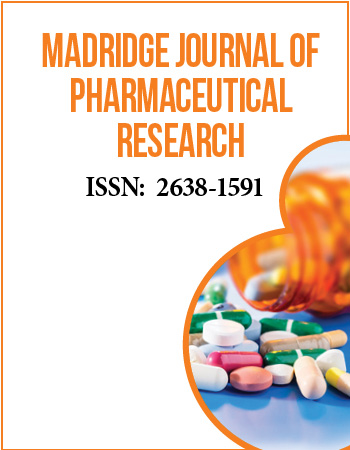International Conference on Medicinal and Pharmaceutical Chemistry
December 5-7, 2016 | Dubai, UAE
Structure-based design and biological evaluation of synthetic porphyrin derivatives as G-Quadruplex stabilizing anticancer agents
1*Pioneer Pharmacy Degree College, Pioneer Medical Campus, India
G-quadruplex structures formed in telomeres and proto-oncogene represent a potentially useful target for anticancer drugs. Stabilization of this arrangement may inhibit the further action of different enzymes involved in cancer cell immortalization. In present work, structure based drug design was carried out on crystal structures of a parallel stranded human telomeric quadruplex in complex with the porphyrin TMPyP4 and tetra-(4-n-methylpyridyl) porphyrin with monomeric parallel-stranded DNA tetraplex of c-myc promoter. In case of human telomeric quadruplex, the porphyrin molecules bind by stacking onto the TTA nucleotides, either as part of the external loop structure or at the 5ʼ region of the stacked quadruplex having no direct ligand interactions with G-tetrads. This is in accord with the relative non-selectivity by porphyrin for quadruplex DNAs compared to duplex DNA. While in c-myc, promoter involves a core of three stacked guanine tetrads formed by four parallel guanine tracts with all anti guanines and a snapback 3ʼ-end syn guanine in complex with porphyrin moiety. After virtual screening some of the potential compounds were evaluated for their ability to bindand stabilise G-quadruplex structures by PCR stop assay procedure. DNApolymerase primer extension reactions were carried out using twoseparate DNA templates. One contained four repeats of the humantelomeric sequence (Quadruplex Forming, QF), Temp[TTAGGG]4 and a second contained fourrepeats of a non-G-quadruplex-forming sequence (NQF), Temp[TTAGAG]4. Primer extension reactions were conducted in the varying concentrations of porphyrin analogues. Compoundswere also evaluated for in vitro cell growth inhibition, expressed as IC50 values using MTT assay in two human tumor cell lines MCF-7 (breast carcinoma) and A549 (non-smallcell lung carcinoma). In general, all of the compounds are effective G-quadruplexstabilisers. Ligand-induced polymerase stop productsat the G-quadruplex-forming site increased upon increasing theconcentrations of ligands. The primer extension reactionsusing the non-G-quadruplex-forming Temp[TTAGAG]4 had revealed no G-quadruplex stop products, which indicates that the inhibition of DNA polymerase activity using thistemplate is due to non-specific interactions of the porphyrin ligands with theDNA. It was also observed that, after comparing the inhibition of full length product formed by both quadruplex and non-quadruplex forming templates, most compounds act as non-specific inhibitors of telomerase except PYP-1 and in some extent PYP-2.
The study indicates that these compounds had strong G-Quadruplex binding affinity with very good inhibitory activity in MCF-7 and A549 cell lines.
Keywords: Telomeres, G-quadruplex, Porphyrin
Biography:
Dr. D. B. Meshram is an academician, teaching graduates and post graduates since 1998. Has worked with various educational institutes helping them to develop curriculum and research aptitude amongst students. He was awarded with junior research fellowship by University Grants Commission, New Delhi, India for pursuing his Masters in Pharmacy. His biography was published in Marquis Worlds Whoʼs Who, 2010 edition. He has guided number of students for their dissertation at postgraduate level. To his credit he has number of research publications in peer reviewed journals. He is a member of International HPTLC Association. His research interest encompasses from synthetic chemistry to analytical method development and validation. Presently he is working as a Director of Pioneer Pharmacy Degree College, Vadodara, Gujarat, India.


